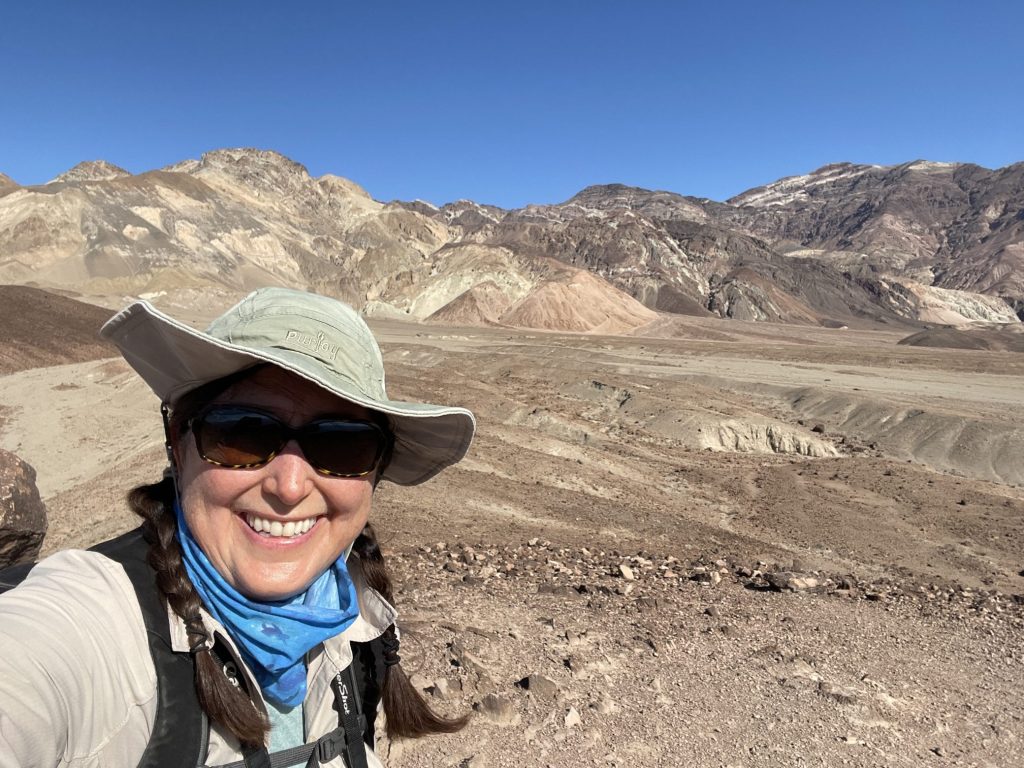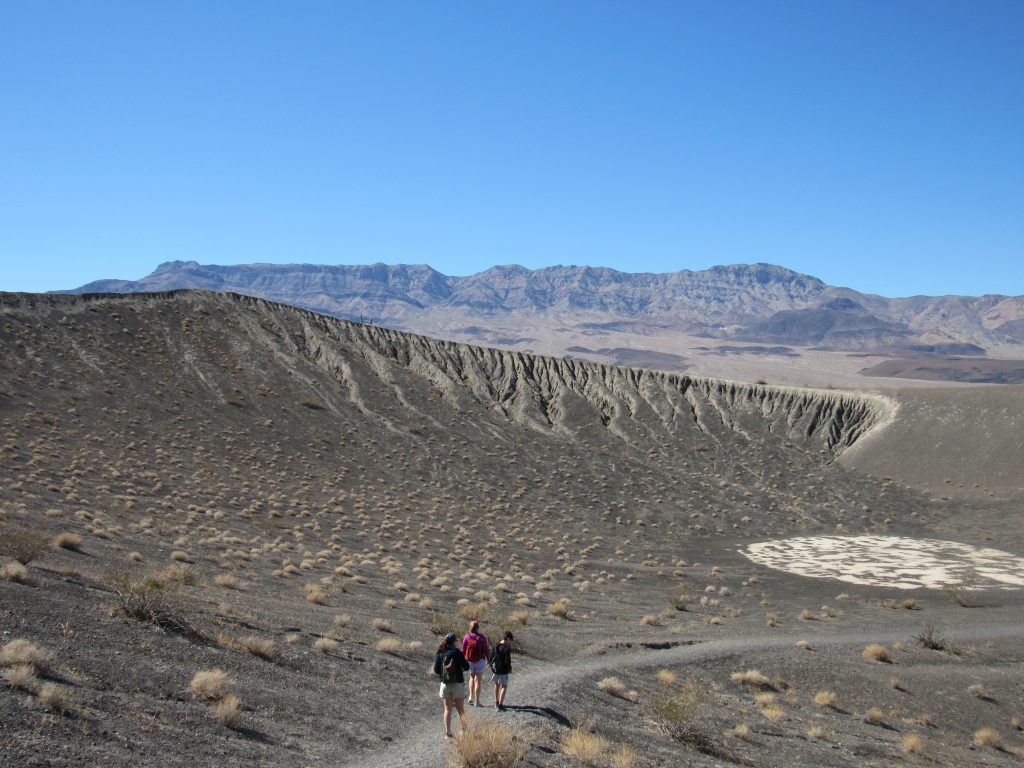Death Valley is the largest national park in the contiguous United States, as well as the hottest, driest and lowest of all the national parks in the United States. Badwater Basin is 282 feet (86 m) below sea level! It is the second lowest in the Western Hemisphere after Laguna del Carbón in Argentina 344 ft below sea level.

We went on a road trip to Death Valley in a Genesis G80. I was surprised how few services were available in the area. I read four guidebooks but not one seemed to HIGHLIGHT enough how you need to bring plenty of water or buy some at your hotel or at a gas station. HIKE EARLY! The sun is very strong! There is a ranger station but there is no cell service. We used our car GPS to get from location to location although the paper map from the ranger station was very helpful as well.
What was our plan?
- Start your journey at Furnace Creek Visitor Center and talk with the rangers from the National Park Service about what to see. You can buy your parking pass here as well.
- Ubehebe Crater: Ubehebe Crater is a large volcanic crater 600 feet deep and half a mile across. We hiked around part of it. It was steep up at first but then fairly flat. We saw a family hike down into the crater. It looked very challenging to hike back up in the moving terrain. AND YES! You can see me hula-hooping at the crater in the video!

- Harmony Borax Works: Harmony Borax Works was the central feature in the opening of Death Valley and the subsequent popularity of the Furnace Creek area. The plant and associated townsite played an important role in Death Valley history. We stopped at this site briefly to see the buildings. On December 31, 1974, the site was placed on the National Register of Historic Places.
- Gas was over $6/gallon when we were visiting.
- Artists Drive was one of my favorite stops! It is a popular scenic drive in the park, the nine mile (14.5 km) paved road winds through multicolored, eroded hills. The colorful rainbow hills of Artists Drive were formed by volcanic deposits of different compositions. You can also get out and walk at Artists Palette. Remember your hat, chapstick, water and charge up your camera for the great photos.

We took photos at Golden Canyon Trailhead. Maybe another time we will hike here.

BADWATER BASIN is 282 feet below sea level. This was a definite highlight for our group! The lowest point in North America is a surreal landscape of vast salt flats. The salt flats here cover nearly 200 square miles (518 square km), and are composed mostly of sodium chloride (table salt), along with calcite, gypsum, and borax.

On Day Two, we started at Rhyolite a historic gold mining town and Goldwell Open Air Museum. This video is just about our time there:

The Mesquite Flat Sand Dunes were amazing! For dunes to exist there must be a source of sand, prevailing winds to move the sand, and a place for the sand to collect. The eroded canyons and washes provide plenty of sand, the wind seems to always blow (especially in the springtime), but there are only a few areas in the park where the sand is “trapped” by geographic features such as mountains.

The view from Zabriskie Point was spectacular!

We went up to Dantes View for sunset. It was about 30 degrees colder as we sent up the steep hill and the sun began to fade. It is 5,575 ft (1,699 m) above Badwater Basin. You can bring your telescope because Death Valley National Park is an International Dark Sky Park.

Thank you to Julie, Eva and Alessio for going on a road trip with me in a Genesis G80. We had a blast!

